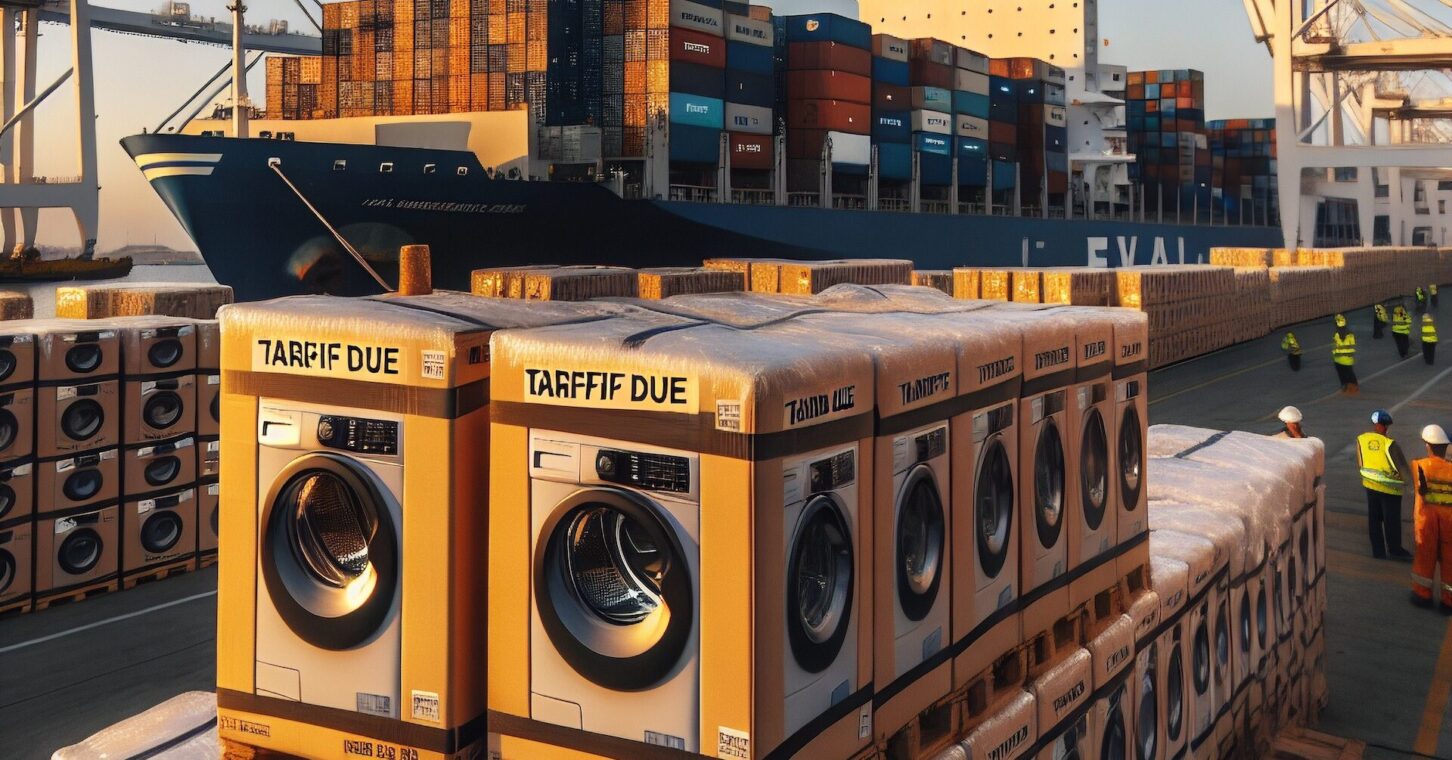
During his 2020 presidential campaign, President Joe Biden slammed former President Donald Trump for his protectionist policies, and especially for starting a trade war that raised prices for American consumers while sparking retaliation that hurt American farmers. But since entering office, Biden has done little to reverse the tariff hikes and trade barriers erected by his predecessor. And, more worrisome, he has reinforced a mounting bipartisan consensus that free trade is no longer in the interests of the American people.
Let’s start with the dragon in the room: China. Starting in 2018, the Trump administration boosted tariffs on Chinese imports from less than 4% on average to 19% by the time Trump left office. Biden not only kept all of those tariffs in place, but just this May, imposed further steep tariff hikes on another $18 billion worth of imports of electric vehicles, steel and aluminum, semiconductors, medical supplies, and other products.
To be sure, it is important and appropriate to protect American workers and firms from unfair Chinese trade practices, as well as to ensure the viability of strategic sectors vital to our country’s economic and geopolitical security. But such policies must be carefully targeted, whereas the Trump-Biden tariffs were applied with a broad brush and little balancing of their costs and benefits.
And moving beyond China, several of our key trading partners, including Europe and Japan, saw hefty tariffs imposed on exports of steel and aluminum. These tariffs were replaced by import quota systems under the Biden administration, but their dampening effect on trade remains.
Trade barriers hurt American workers and firms in many ways. First, they boost prices of imported goods and raise the cost of living—this especially hits lower-income households who already struggle to make ends meet.
The Trump administration claimed that the tariffs would be paid for by Chinese exporters, but it is now well understood that they are really paid by U.S. consumers. Estimates place the costs to households of the U.S.-China trade war at hundreds of dollars annually. And these high prices are especially unwelcome in light of the recent surge in inflation.
Second, tariffs raise the price of intermediate inputs imported by American firms, boosting production costs and ultimately lowering U.S. employment. For example, although Trump’s tariffs benefited the aluminum and steel industry, they boosted costs and lowered profits for the downstream companies that used these metals in their own production. As a result, the number of jobs saved in the steel and aluminum industries was dwarfed by the numbers of jobs lost in other sectors, leading to a net decline of an estimated 75,000 manufacturing jobs.
Third, raising tariffs is self-defeating, as it only encourages foreign countries to raise their own barriers against U.S. exports. China raised its tariffs on the United States from below 10% in 2018 to 21.1% by 2020, imposing considerable hardship on U.S. farmers. Trump’s subsidies to the agricultural sector to compensate them for their shortfall proved a double-whammy for other American taxpayers: they not only had to pay for more expensive imports but also had to finance handouts to the farmers.
Finally, protectionism weakens America’s global leadership. A case in point is our pull-out from the Trans-Pacific Partnership (TPP). This trade agreement between 12 Pacific Rim countries would have strengthened our ties to Asia and served as a bulwark against Chinese expansionism. But Trump pulled the United States out of the pact in 2017, and Biden has shown little interest in joining the successor group, despite the bipartisan consensus on containing China’s burgeoning global influence.
The unfortunate reality is that trade wars will do nothing to bring manufacturing jobs back to our nation’s heartland—that horse has left the barn. If the next president really wants to increase opportunities for all Americans, he (or she!) will: First, reverse the tariff hikes in order to lower living costs and boost economic growth. The United States cannot remain one of the world’s most innovative and entrepreneurial economies if it is sheltered from global competition.
Second, substantially step up investments in education. Ultimately, our ability to compete and thrive in a global knowledge economy will depend on the training, intelligence, and creativity of our workforce. But even though the United States ranks near the top of the Organization for Economic Co-operation and Development (OECD) in per capita income, it is in the middle when it comes to public spending on education as well as test scores in math and science.
Finally, bolster the scale and effectiveness of our Trade Adjustment Assistance program, which is widely considered to have failed in its mission.
And, ultimately, the next president must try to rebuild bipartisan support for free trade, which will require the buy-in of the most-affected segments of our society.
Steven B. Kamin is a resident scholar at the American Enterprise Institute, where he studies international macroeconomic and financial issues.